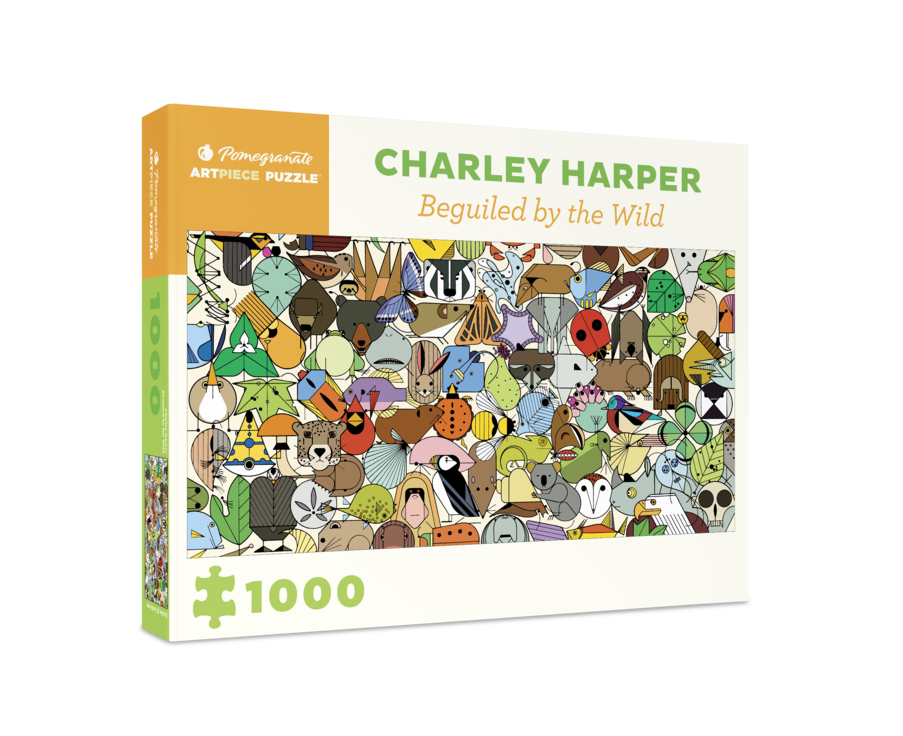 Image 1 of 1
Image 1 of 1


Charley Harper: The World of Birds 1000 Piece Jigsaw Puzzle
Charley Harper (American, 1922–2007)
We Think the World of Birds
With dazzling color and barely contained energy, Charley Harper’s We Think the World of Birds shows all the birds that live within Sapsucker Woods in Ithaca, New York. Hey wait a minute, you say, the Florida scrub-jay doesn’t live in New York! Okay, so Harper also included a few birds of special significance to the Cornell Lab of Ornithology, for whom this painting was commissioned. Not only does the artwork celebrate their feathered friends but each bird depicted represents a conservation initiative or research program of the Lab’s scientists.
The Lab truly does think the world of birds, as did Harper, a longtime conservationist. In fact, for this work he reimagined the “world” in the shape of a bird’s egg rather than a sphere—a fun bit of artistic license, we think. From his early days on a West Virginia farm through his career as a midcentury modernist, Harper found great joy in depicting birds and critters of the woods and beyond.
With subjects ranging from fine art, nature, and architecture to humor, the metaphysical, and more, Pomegranate’s interlocking jigsaw puzzles combine stunning images, superb color reproduction, and sturdy construction to delight generations of novice and veteran puzzle solvers alike.
WARNING: Choking hazard—small parts. Not suitable for children under 3 years.
Charley Harper (American, 1922–2007)
We Think the World of Birds
With dazzling color and barely contained energy, Charley Harper’s We Think the World of Birds shows all the birds that live within Sapsucker Woods in Ithaca, New York. Hey wait a minute, you say, the Florida scrub-jay doesn’t live in New York! Okay, so Harper also included a few birds of special significance to the Cornell Lab of Ornithology, for whom this painting was commissioned. Not only does the artwork celebrate their feathered friends but each bird depicted represents a conservation initiative or research program of the Lab’s scientists.
The Lab truly does think the world of birds, as did Harper, a longtime conservationist. In fact, for this work he reimagined the “world” in the shape of a bird’s egg rather than a sphere—a fun bit of artistic license, we think. From his early days on a West Virginia farm through his career as a midcentury modernist, Harper found great joy in depicting birds and critters of the woods and beyond.
With subjects ranging from fine art, nature, and architecture to humor, the metaphysical, and more, Pomegranate’s interlocking jigsaw puzzles combine stunning images, superb color reproduction, and sturdy construction to delight generations of novice and veteran puzzle solvers alike.
WARNING: Choking hazard—small parts. Not suitable for children under 3 years.






